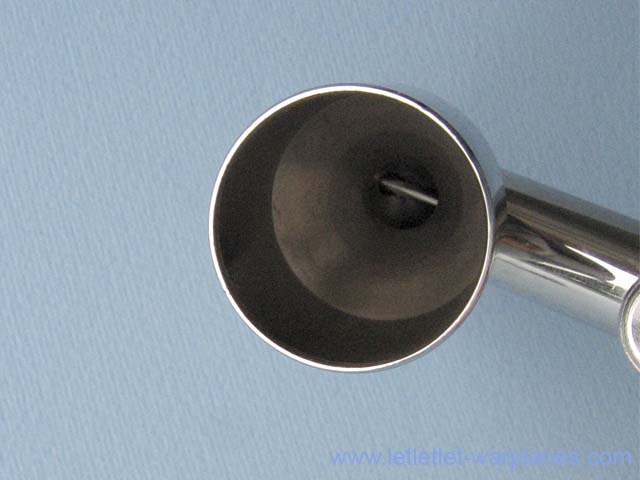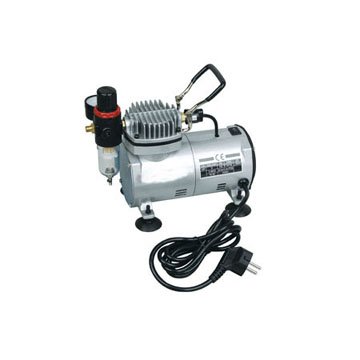The object that I chose is an airbrush. It is one of the most versatile tool in an artist’s toolbox, and the most underused in my opinion.

Examples of people who utilize airbrushes regularly include people who paint cars, special effects artists, (finger)nail technicians, designers, as well as a variety of others. One of the selling points of the airbrush is its versatility. Because the tool comes in a number of different sizes, the types of media that can be used with are quite expansive. Finer media like inks are a given, but tough, broader airbrushes have the ability to handle anything from clear coat, to ceramic glaze.

Most artists that use an airbrush these days were introduced to it by some kind of trade job, as it is not something that generally is taught in schools anymore. It used to be a primary tool of the designer. Examples of extensive airbrush use can be seen around mid-century. Expressive posters, and department store advertisements were quite commonly done in airbrush for their organic quality, and for the speed at which they were able to be produced. Since most signage and such was one by hand, the airbrush offered you an opportunity to maintain a hand-generated quality, while still “mass producing.”
Airbrush artists are often hobbyists, deploying it on anything from model trains, to face paint. Professional use today is still quite common. Automobile graphics and amusement park operations are some of the most recognizable, however anything that can be painted can be airbrushed, so the airbrush gets use in a number of different areas and is really up to the artist as to how/if they want to utilize it.

Since the airbrush is an artist’s tool, the memories that are associated with it are often of the work that is created with it. Some of the most notable work ever done with an airbrush was created by Alberto Vargas around the early to mid 1900s. The work he was known for most was the pin up girls he created. These masterpieces were affectionately dubbed the “Vargas Girls” by Esquire Magazine. His work was so prolific, that the highest achievement in the airbrush world was named after him. Every year, Airbrush Action Magazine awards one airbrush user with this honor, named after the late artist.

Airbrush history is an incredibly rich one. Both because of the art created with it, and because of the evolution of the tool itself. When the airbrush was first realized, it used a couple of wooden blocks, and a soupspoon in its design. The technology has changed drastically over the last century. These days, the thickness of your airbrush spray can be pretty well controlled down to the millimeter.
The technical, and artistic aspects of this tool make it and it’s history incredibly intriguing.











 Examples of people who utilize airbrushes regularly include people who paint cars, special effects artists, (finger)nail technicians, designers, as well as a variety of others. One of the selling points of the airbrush is its versatility. Because the tool comes in a number of different sizes, the types of media that can be used with are quite expansive. Finer media like inks are a given, but tough, broader airbrushes have the ability to handle anything from clear coat, to ceramic glaze.
Examples of people who utilize airbrushes regularly include people who paint cars, special effects artists, (finger)nail technicians, designers, as well as a variety of others. One of the selling points of the airbrush is its versatility. Because the tool comes in a number of different sizes, the types of media that can be used with are quite expansive. Finer media like inks are a given, but tough, broader airbrushes have the ability to handle anything from clear coat, to ceramic glaze. Most artists that use an airbrush these days were introduced to it by some kind of trade job, as it is not something that generally is taught in schools anymore. It used to be a primary tool of the designer. Examples of extensive airbrush use can be seen around mid-century. Expressive posters, and department store advertisements were quite commonly done in airbrush for their organic quality, and for the speed at which they were able to be produced. Since most signage and such was one by hand, the airbrush offered you an opportunity to maintain a hand-generated quality, while still “mass producing.”
Most artists that use an airbrush these days were introduced to it by some kind of trade job, as it is not something that generally is taught in schools anymore. It used to be a primary tool of the designer. Examples of extensive airbrush use can be seen around mid-century. Expressive posters, and department store advertisements were quite commonly done in airbrush for their organic quality, and for the speed at which they were able to be produced. Since most signage and such was one by hand, the airbrush offered you an opportunity to maintain a hand-generated quality, while still “mass producing.” Since the airbrush is an artist’s tool, the memories that are associated with it are often of the work that is created with it. Some of the most notable work ever done with an airbrush was created by Alberto Vargas around the early to mid 1900s. The work he was known for most was the pin up girls he created. These masterpieces were affectionately dubbed the “Vargas Girls” by Esquire Magazine. His work was so prolific, that the highest achievement in the airbrush world was named after him. Every year, Airbrush Action Magazine awards one airbrush user with this honor, named after the late artist.
Since the airbrush is an artist’s tool, the memories that are associated with it are often of the work that is created with it. Some of the most notable work ever done with an airbrush was created by Alberto Vargas around the early to mid 1900s. The work he was known for most was the pin up girls he created. These masterpieces were affectionately dubbed the “Vargas Girls” by Esquire Magazine. His work was so prolific, that the highest achievement in the airbrush world was named after him. Every year, Airbrush Action Magazine awards one airbrush user with this honor, named after the late artist.  Airbrush history is an incredibly rich one. Both because of the art created with it, and because of the evolution of the tool itself. When the airbrush was first realized, it used a couple of wooden blocks, and a soupspoon in its design. The technology has changed drastically over the last century. These days, the thickness of your airbrush spray can be pretty well controlled down to the millimeter.
Airbrush history is an incredibly rich one. Both because of the art created with it, and because of the evolution of the tool itself. When the airbrush was first realized, it used a couple of wooden blocks, and a soupspoon in its design. The technology has changed drastically over the last century. These days, the thickness of your airbrush spray can be pretty well controlled down to the millimeter.